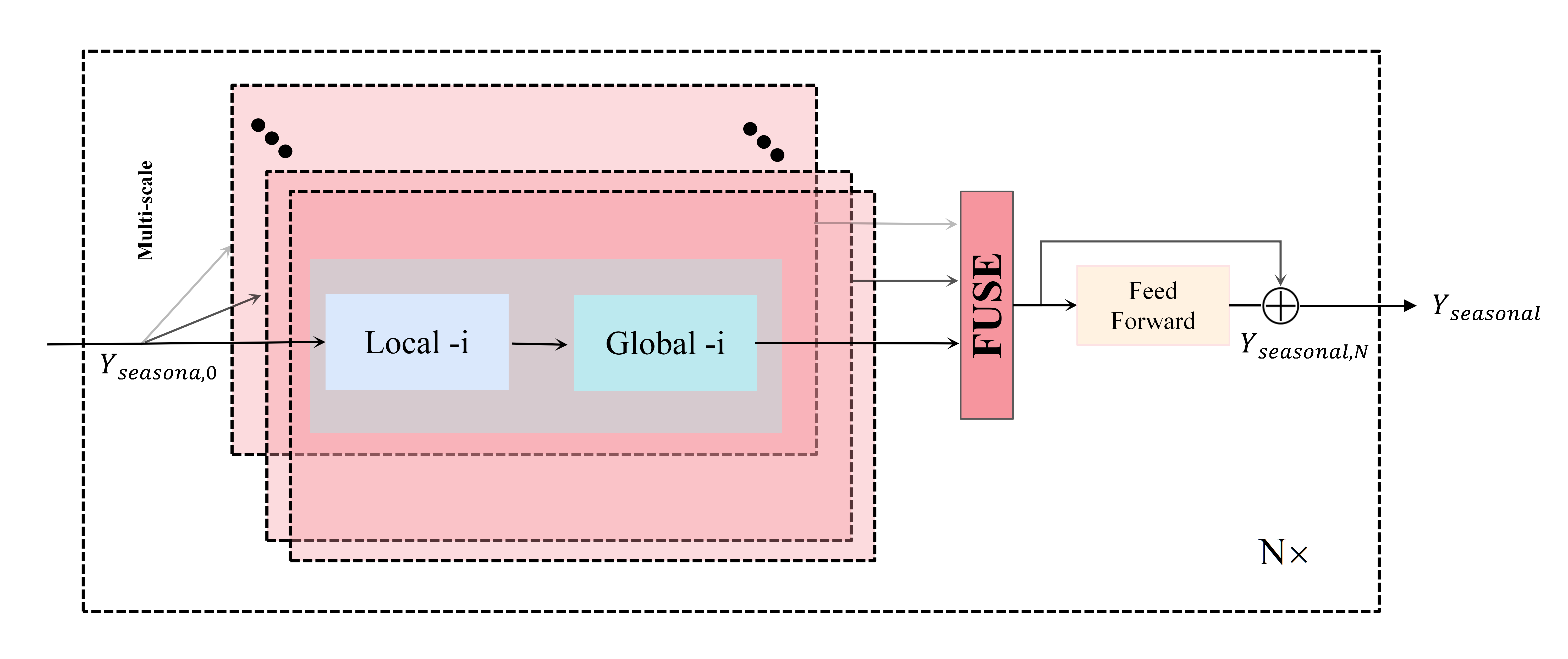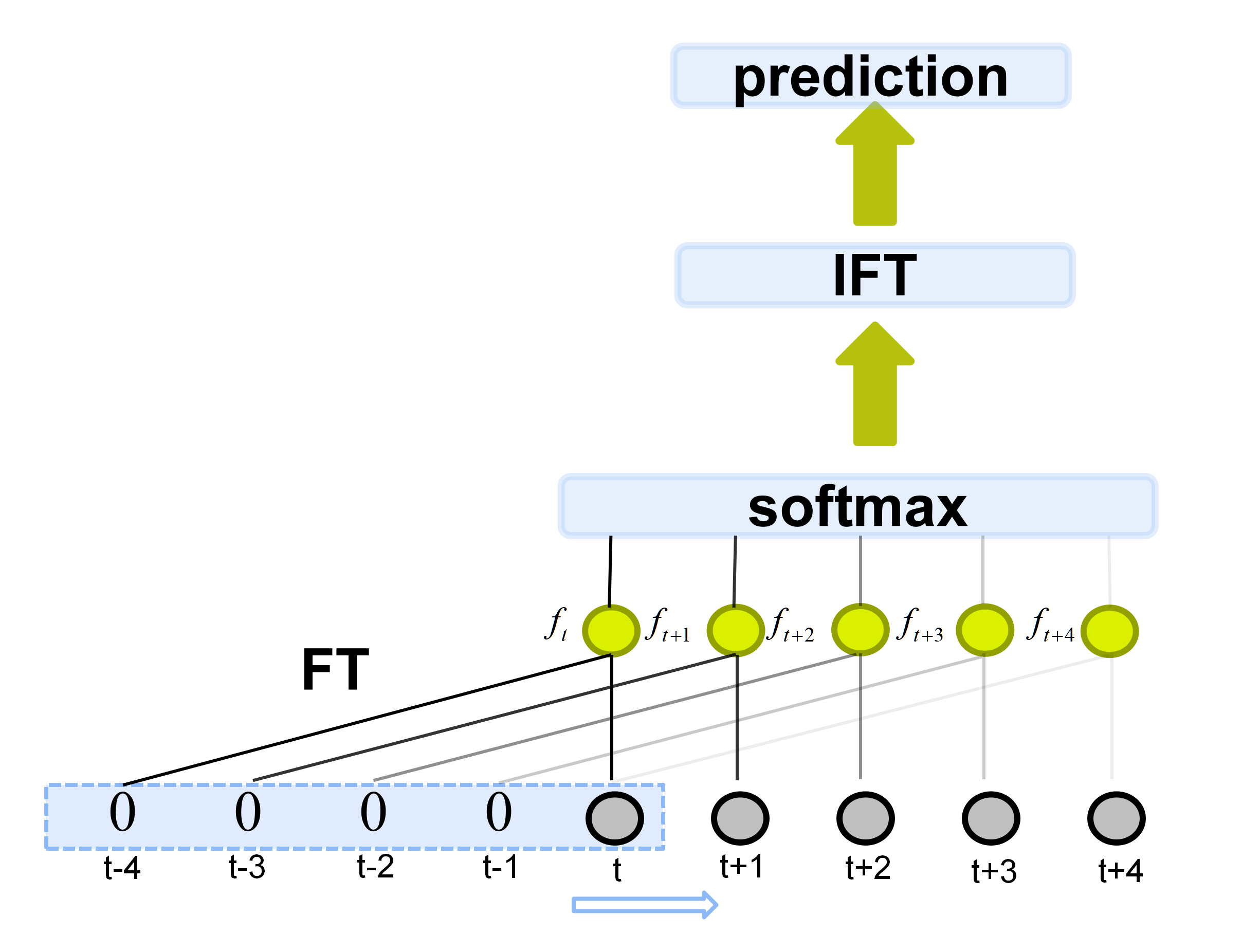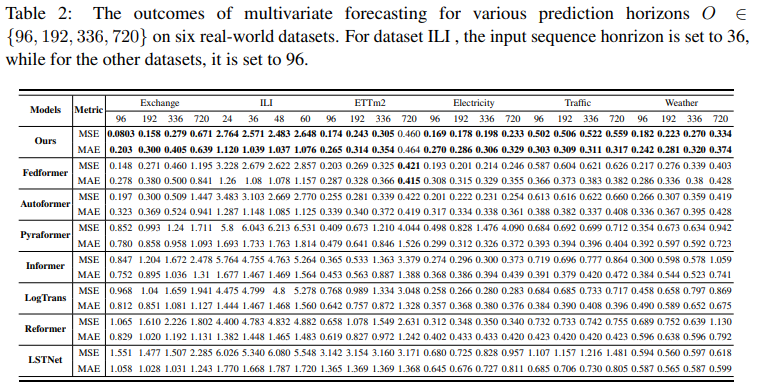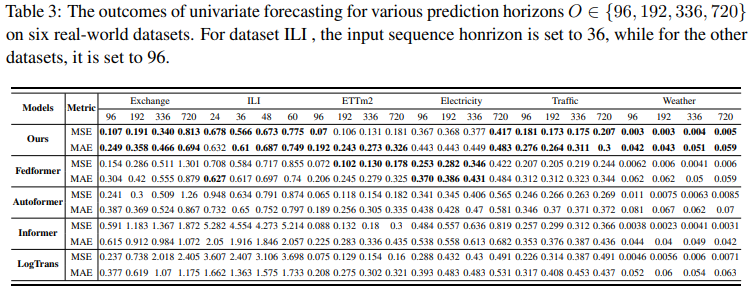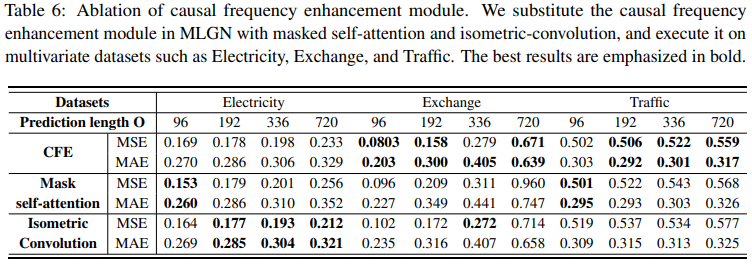MLGN (Please stay tuned for further updates on our progress. Thank you for your interest in our work.)
Code release of paper "Multi-Scale Local-Global Feature Learning Network for Long-term Series Forecasting" MLGN achieve SOTA on six benchmarks.
As shown in Figure 1, we decompose the time series into seasonal part and trend part by Multi-scale Sequence Decomposition. For seasonal part, we use Seasonal Component Prediction block to predict. For trend part, we use a simple full-connected layer to predict.
The seasonal part contains several different patterns after Multi-scale Sequence Decomposition. For each pattern, we use local-global module to discovery local temporal features and global relations.
We use down-sampling interactive learning convolution to capture local features and causal frequency enhancement module to discover global correlations.
We use downsampling convolution to capture local features.
We use causal frequency enhancement module to discover global correlations
-
pip install -r requirements.txt -
Data. All the six benchmark datasets can be obtained from Google Drive or Tsinghua Cloud.
-
Reproducibility. We provide the experiment scripts of all benchmarks under the folder
./scripts. You can reproduce the experiments results by:
bash ./scipts/ETTm.sh
bash ./scipts/ETTh.sh
bash ./scipts/ECL.sh
bash ./scipts/Exchange.sh
bash ./scipts/Traffic.sh
bash ./scipts/WTH.sh
bash ./scipts/ILI.sh
Visualization of forecasting results: The forecasting results from the test set of univariate datasets, Electricity and Traffic, are visualized in Figure.9 and Figure.10. The forecasting results from the test set of multivariate datasets, ETTm1 and ETTm2, are visualized in Figure.11 and Figure.12.
 Figure 9: Univariate forecasting cases using the Electricity dataset with model MLGN. Input-length =
96, Prediction-length = (96, 192, 336, 720).
Figure 9: Univariate forecasting cases using the Electricity dataset with model MLGN. Input-length =
96, Prediction-length = (96, 192, 336, 720).
 Figure 10: Univariate forecasting cases using the Traffic dataset with model MLGN. Input-length = 96,
Prediction-length = (96, 192, 336, 720).
Figure 10: Univariate forecasting cases using the Traffic dataset with model MLGN. Input-length = 96,
Prediction-length = (96, 192, 336, 720).
 Figure 11: Multivariate forecasting cases using the ETTm1 dataset with model MLGN. Input-length =
96, Prediction-length = (96, 192, 336, 720).
Figure 11: Multivariate forecasting cases using the ETTm1 dataset with model MLGN. Input-length =
96, Prediction-length = (96, 192, 336, 720).
 Figure 12: Multivariate forecasting cases using the ETTm2 dataset with model MLGN. Input-length =
96, Prediction-length = (96, 192, 336, 720).
Figure 12: Multivariate forecasting cases using the ETTm2 dataset with model MLGN. Input-length =
96, Prediction-length = (96, 192, 336, 720).
If you have any questions, please contact jiangmaowei@sia.cn. Welcome to discuss together.
If you find this repo useful, please cite our paper
@article{mlgn,
title={MLGN: Multi-Scale Local-Global Feature Learning Network for Long-term Series Forecasting},
year={2023}
}
We appreciate the following github repos a lot for their valuable code base or datasets:
https://github.com/thuml/Autoformer
https://github.com/zhouhaoyi/Informer2020



